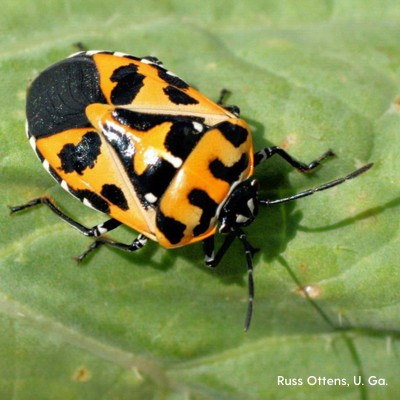
Fact Sheets And Publications
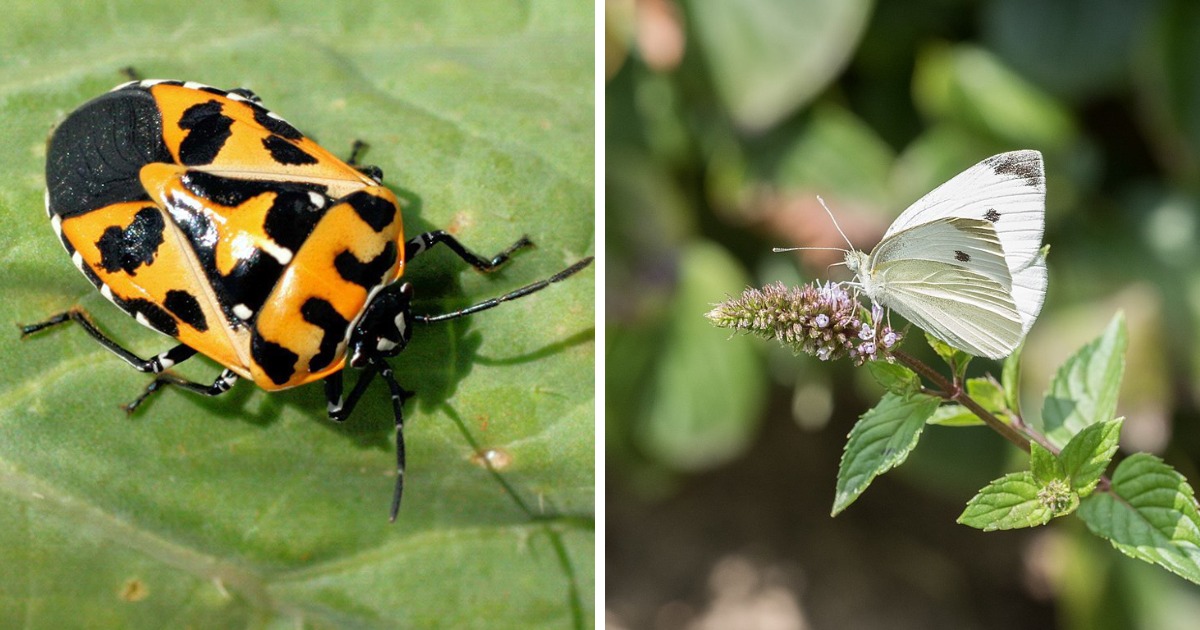
Non-chemical pest control options for managing insect pests on Brassicas
(Cabbage, kale, broccoli, brussels sprouts, etc.)
July and August in the vegetable garden typically bring bountiful harvests of colorful vegetables. These are also the months when insect pests can really make their presence known, with plant and fruit damage becoming increasingly noticeable.
Jump to: Harlequin Bug | Imported cabbage worm
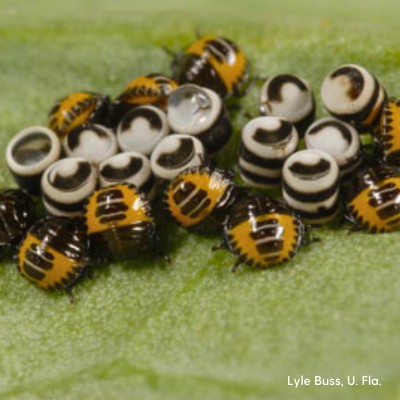
Life cycle and Suggested non-chemical control methods (in bold)
- Adults overwinter in sheltered areas near the garden
- Remove crop debris at season's end to eliminate overwintering sites
- Adults emerge in early spring.
- Destroy adults as they emerge from hibernation (drown in a jar of soapy water)
- Distinctive eggs look like tiny white kegs with black markings (~12 per batch, on the underside of leaves). Bright red and black nymphs hatch out and suck the sap.
- Crush or drown any eggs and nymphs.
- 2 or 3 generations per year in the mid-Atlantic
- Row covers can be used to exclude later generations (brassicas do not require insect pollination)
- Possible use of trap crops
- Said to be "very partial to cleome" (annual flowers); pull up and dispose of infested plants in black plastic bags.
- M. Raupp, UMD: "plant a trap crop of cabbage or kale very early or very late in the season. In spring as survivors move to the early planted greens, wage war on the concentrated encampment of bugs to reduce the number left to plague crops later in the year. In fall, after most of your vegetables have been harvested, leave just a few cabbages behind to attract any harlequins lingering about. The bugs concentrate on the cabbages and can be annihilated, which reduces the number of bugs moving to the ground to spend the winter."
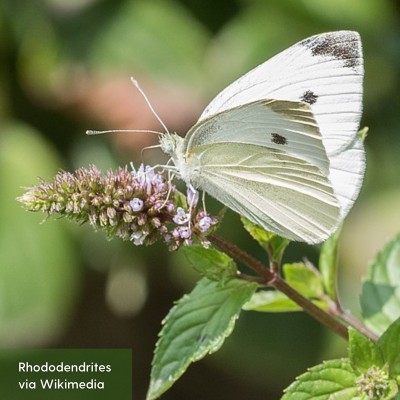
Imported cabbageworm (cabbage white butterfly)
Crops attacked
Brassicas, including cabbage, broccoli, Brussels sprouts, cauliflower, collards, kale, turnip, radish, etc., and many related weeds.
Type of damage
Larvae chew on plant foliage and sometimes bore into broccoli or cabbage heads.
Life cycle and Suggested non-chemical control methods (in bold)
- Cabbage white butterflies start to emerge in the early spring. Egg laying begins soon after flight is observed, and eggs hatch in about six days. The tiny new caterpillars eat very little, with maximum feeding occurring 2 to 3 weeks after the eggs hatch when the caterpillars are larger and near pupation.
- By planting early-maturing brassica crops early in the spring, you can often avoid the "danger zone" of heavy larval feeding.
- Note that the time to maturity of different cultivars may vary significantly. For example, the time from transplant to harvest for broccoli can vary from 48 to 75 days, depending on the cultivar. To avoid pest damage in the spring, select early maturing varieties and plant them as seedlings as early as possible in the spring, ideally in mid-March
- Two to four, or even more, generations are produced per year.
- If crops are planted later in the spring or for fall, brassica crops:
- Handpick the cabbage worms off of the underside of the leaves while the plants are young. This procedure is effective when plants are young or if only a few larvae are present.
- Use row covers to prevent egg laying by the butterflies (brassicas do not require insect pollination to produce a crop, so the covers can be left on until harvest).
- Fall sanitation. Clean up and remove infested plant material after harvest to eliminate overwintering sites of the pupae.
- Bacillus thuringiensis (Bt), an "organic" microbial insecticide, is highly effective on younger caterpillars.
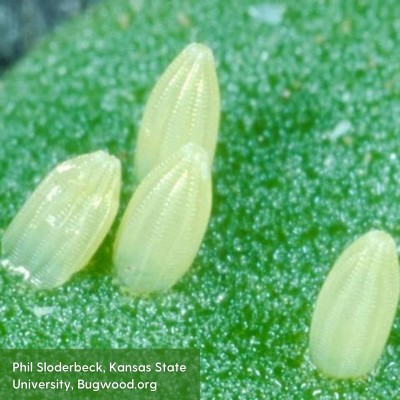
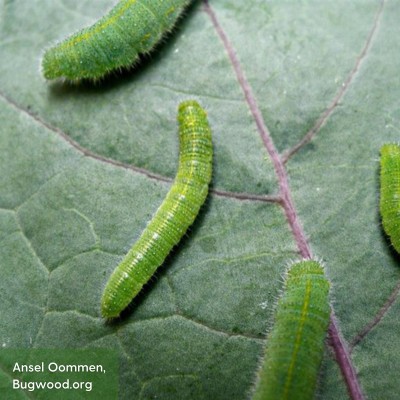
This factsheet was created for UD Cooperative Extension and the Delaware Master Gardener Program by Dr. Judy Hough-Goldstein.
UD Cooperative Extension
This institution is an equal opportunity provider.
In accordance with Federal law and U.S. Department of Agriculture policy, Cooperative Extension is prohibited from discriminating on the basis of race, color, national origin, sex, age, or disability.

